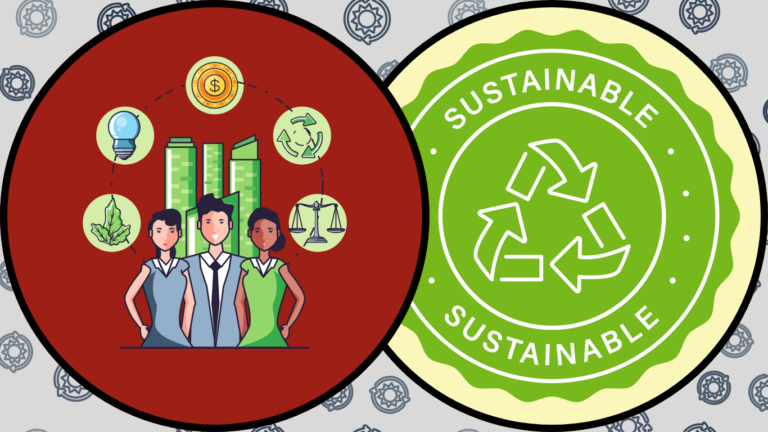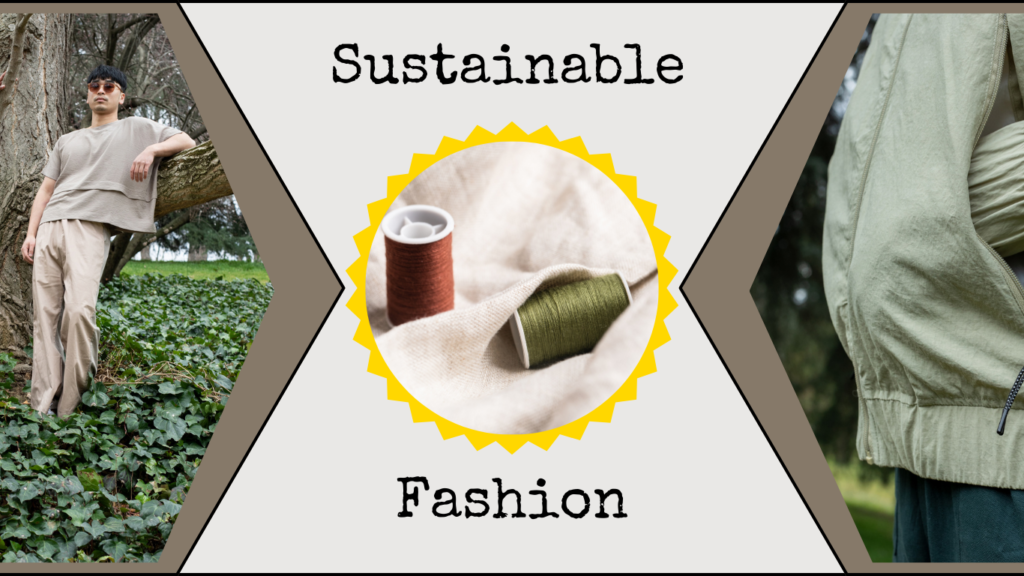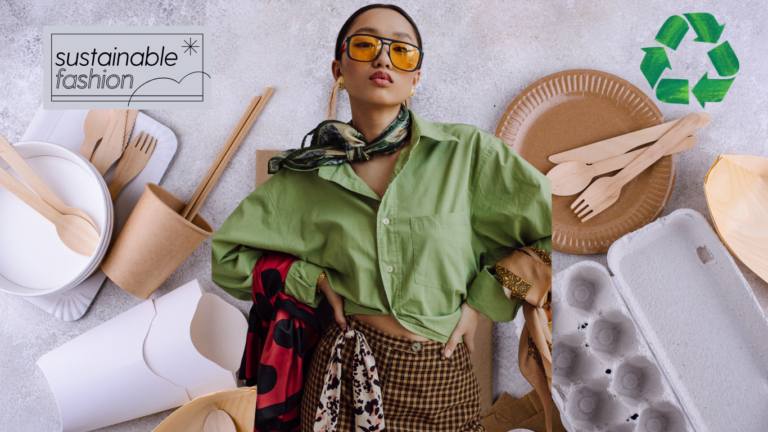From Trend to Transformation: The Power of Sustainable Fashion
This article reviews sustainability in fashion. Within the framework of the current trend of “sustainable fashion,” garments can be seen as being in good condition concerning damages to the environment, the requirement to ensure fair working practices, and all-around marketing. A growing number of people have adopted the trend just so they can look good while caring for Mother Earth. Now one begins to wonder why sustainable fashion counts among trends and yet remains beyond the understanding of a trend. Let us therefore have a discussion on this momentous movement and how it stands to resurrect the fashion industry for the better!

What Is Sustainable Fashion?
Sustainable fashion tries to formulate clothes and other textile products with cognizance of the environment. It tries to use environmentally preferable materials,reducing waste and assuring fair treatment of the workers. This means:
– Under organic cotton, recycled fabric, or bamboo; used materials that are less harmful to the environment.
– Engaging in activity against fast fashion, which wastes resources and damages the planet.
– Supporting brands that pay just wages to their workers and provide an ethically sound working environment.
– Buying quality clothing items instead of quantity so that they do not have to be replaced very often.
Sustainable fashion is a marriage of good choices that help the planet and great looks. People should be making wardrobe choices that are not based on trends that will last only a few months but that they can wear for years on end.
Why Sustainable Fashion is Important
1.Protecting Environment
The fashion industry is one of the largest polluters on Earth. It uses water, chemicals, and energy in large quantities and sends many of the garments to the landfills, thus polluting even more. Fast fashion makes clothing readily disposable so as to accumulate massive amounts of textile waste. Sustainable fashion, instead:
– Estimations show that sustainable dyeing and farming methods save up to 80% of water compared to conventional dyeing methods, while synthetic fibers like polyester use immense amounts of water in their production.
– They are biodegradable and break down. Natural fabrics readily break down; synthetic ones like polyester take hundreds of years to decompose.
– Old clothes should be recycled to become new clothes, which reduces the need for virgin materials.
– Provides sustainable ways and encourages slow fashion that makes well-made garments to last for years instead of just weeks.
Buying sustainable fashion is doing good to the planet. Clean water and fresh air sustain life for longer and decrease landfill burdens. Every little bit counts!
2.Saves Money in the Long Run
Some people argue that sustainable fashion is expensive. Indeed, sustainable items may appear pricey but are essentially money-savers for the following reasons:
– Because of the greater caliber and craftsmanship, these clothes will last longer.
– You buy fewer things of better quality, actively avoiding unnecessary purchases.
– You do not need to replace them as often, which saves money along the way.
– The investment in classic pieces keeps your wardrobe stylish year after year as opposed to the short-lived fashion trends.
Buying better clothes means you don’t have to shop as often. This saves money! Instead of filling your closet with cheap clothes that wear out fast, you can have a few good pieces that stay beautiful for a long time.
3.Fair Wages and Ethics
Fast fashion brands do not pay their workers fairly. They make clothes with speed, very often at the cost of the quality of the materials, through processes that disregard ethical standards of working conditions. Sustainable fashion attempts to make sure that workers are paid fairly and treated well. If you shop with ethical brands:
– Support safe working conditions.
– Support fair pay for garment workers.
– Support environmentally safe production processes, which don’t exploit the workers or destroy the ecosystem.
– A pathway to a world where fashion is more responsible and humane.
Whereas garment workers treated better will make better clothes, fair wages bring smiles to those who make them, and happy workers make quality cloths. Sustainable fashion is good for all!

Sustainable closet
1. Buy Less, Choose Better
It is better to buy a few high-quality clothing that would last longer than cheap. Choose styles that have no expiration date. By investing in the classics-pair of good jeans, an excellent-fitting blazer, well-made shoes-you are already reducing the need for endless shopping of novelty items.
Choosing better clothes means you don’t have to shop all the time. Your closet will have strong, stylish outfits that last many years. No more wasting money on clothes that rip or fade too quickly!
2. Shop Second-Hand
Thrift stores, vintage stores, and online resale sites are tremendous places to acquire trendy clothes that harbor no environmental harm. The purchase of second-hand ultimately curbs waste while giving clothes a second chance at life. It is also an intelligent way of getting unique fashion pieces that are of the highest quality at the least price without augmenting new clothing production.
Shopping second-hand is fun! You can find unique clothes that no one else has. It’s like a treasure hunt for fashion lovers!
3.Caring for Clothes
Maintaining clothing is another thing that contributes to the sustainability of fashion. To keep your garments for longer life, proper care can be exercised in someone of the following ways:
– Minimize washing. When washable, cold-water wash preserves fabric quality best.
– Air dry instead of tumble dry to prevent fabric wear.
– Store clothing correctly to help prevent damage and increase the lifespan.
– Consider repairing damages rather than discarding them. Fixes are not brain surgery for clothing; they can be as simple as reattaching a missing button or patching a tiny hole. Every other little thing counts!
Clothing is easy to take care of! Washing them the correct way will help them to last for a long time. Repairing clothes instead of throwing them is saving money and the environment!

4. Support Sustainable Brands
There are many brands today that make eco-friendly clothes. Look for those that use organic materials, fair labor, and sustainable production methods. Brands like Patagonia, Reformation, and Stella McCartney all get a lot of attention for their sustainable fashion. Supporting these organizations conveys to the industry that the consumers do care about ethical fashion.
5. Recycle and Donate
Another measure one can adopt is recycling and donating. Customarily, donate the clothes you do not use anymore. Recycling is also the option available now so that clothes are returned to the manufacturer to create new fabric. Upcycling seems far better and more fashionable: A tote bag made from old jeans or a top from an old dress.
Recycling clothing is good for everyone and the planet! When we recycle, we allow other people to wear our unwanted clothes. And by recycling, new clothes are made from the old ones.

Tomorrow’s Sustainable Fashion
Sustainable fashion holds promise and is the future of this industry. More and more brands are opting for materials that are eco-friendly, while shoppers are also getting conscious about their purchasing decisions. Supporting sustainable fashion will develop into an even larger force toward the wellbeing of our planet. Moreover, various governments and organizations are working to roll out initiatives regarding policies for the sustainable practice of the fashion industry.
The role of technology is immensely helping for the sustainable projection in fashion. Scientists are working on biodegradable textiles and lab-grown leather, while some companies have already adopted waterless dyeing technologies for reduced environmental impacts from clothing production. In addition to that, conscious consumers also demand transparency from brands, which consequently impel companies to adopt practices that are ethical and considerate of the environment.

